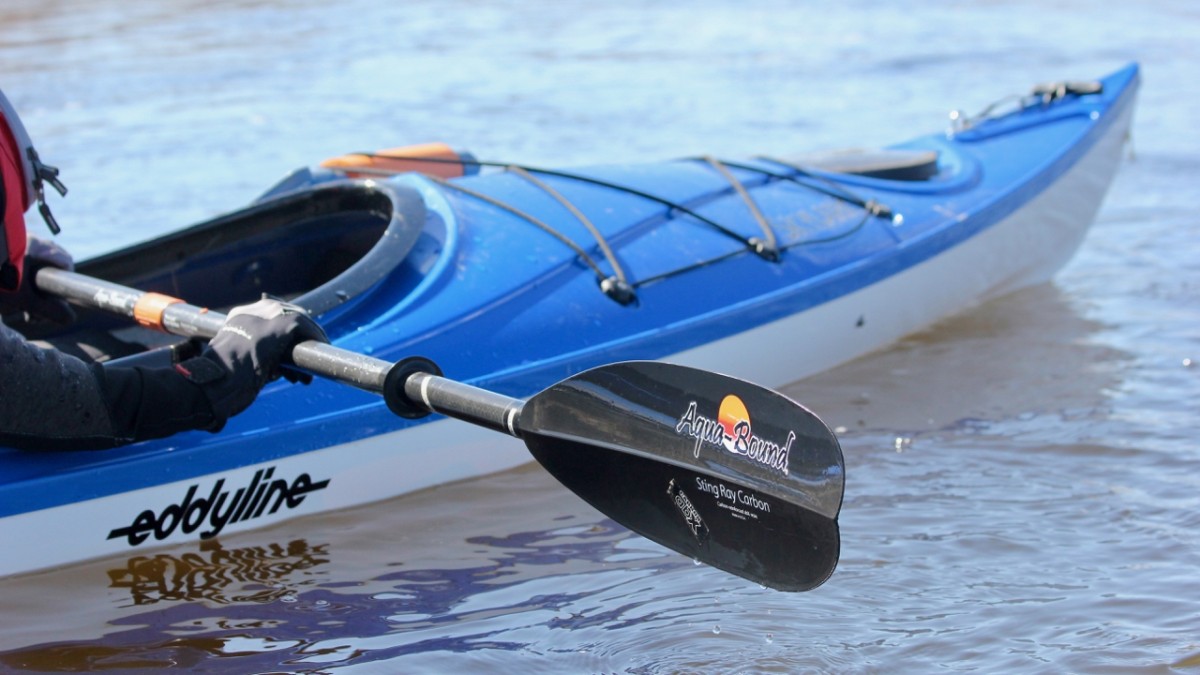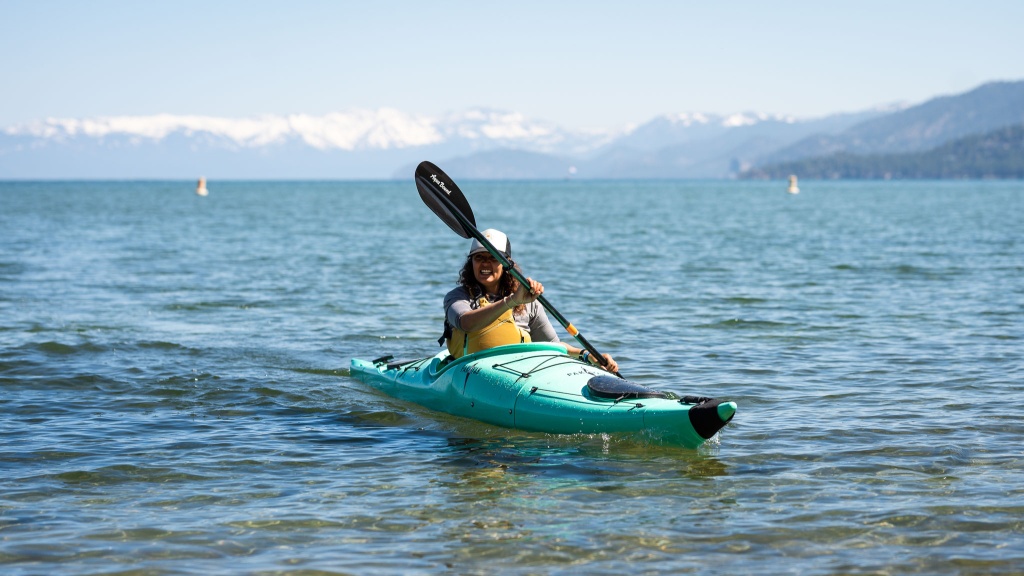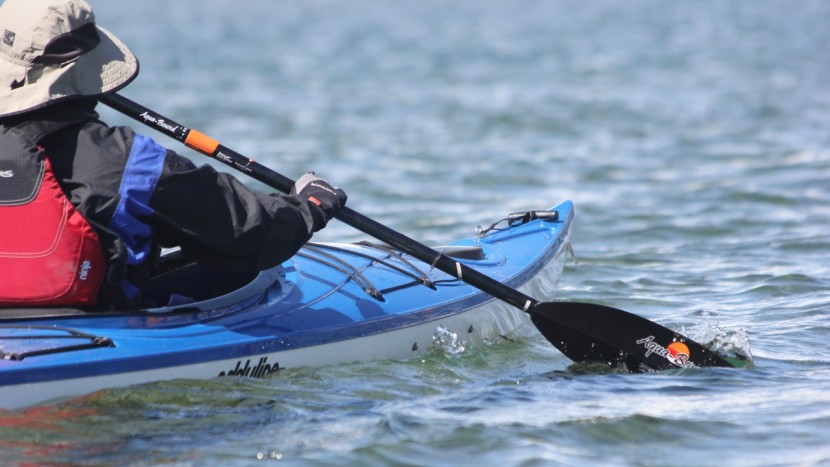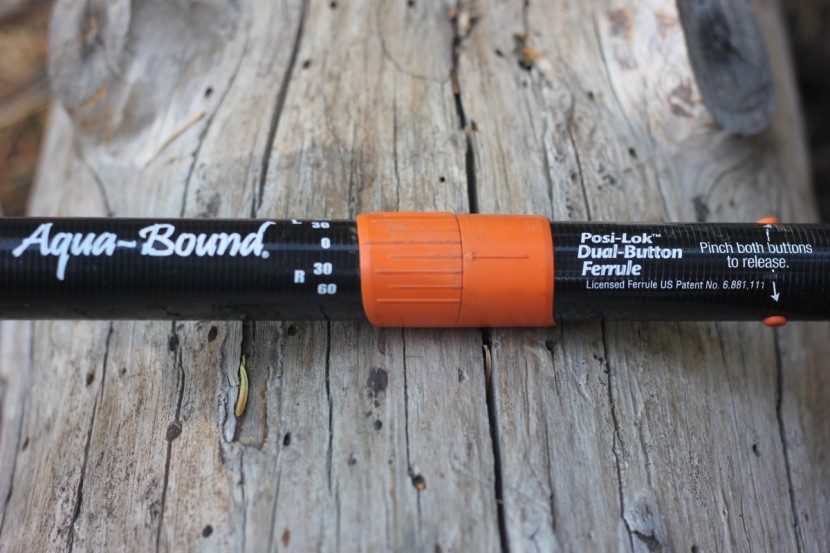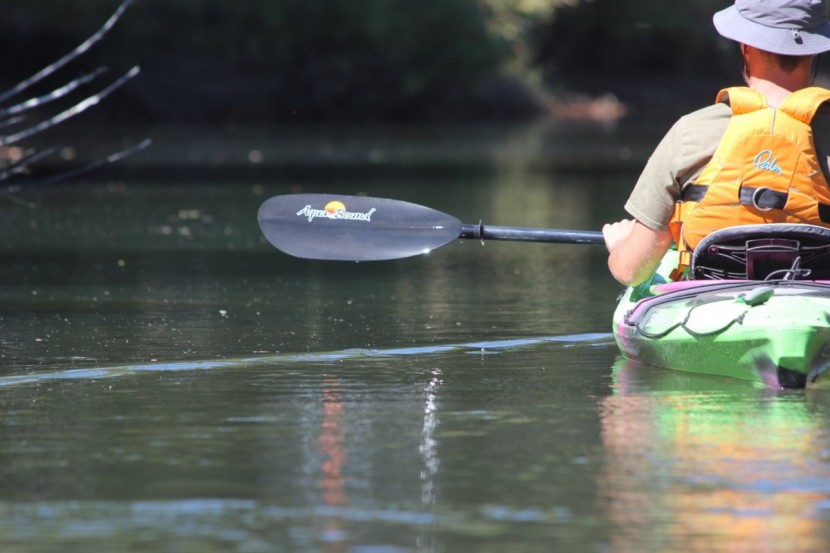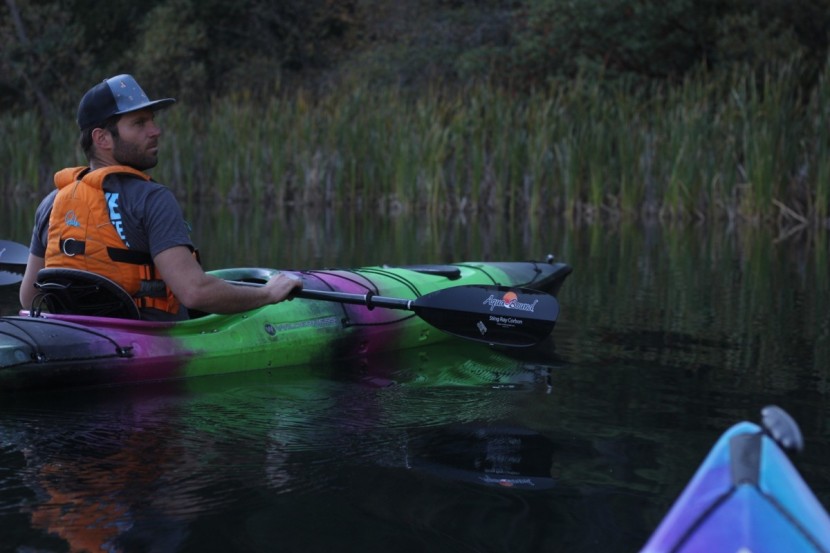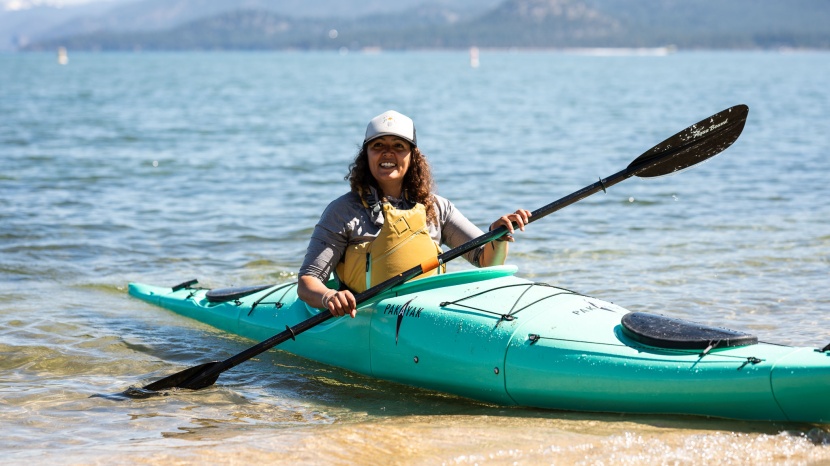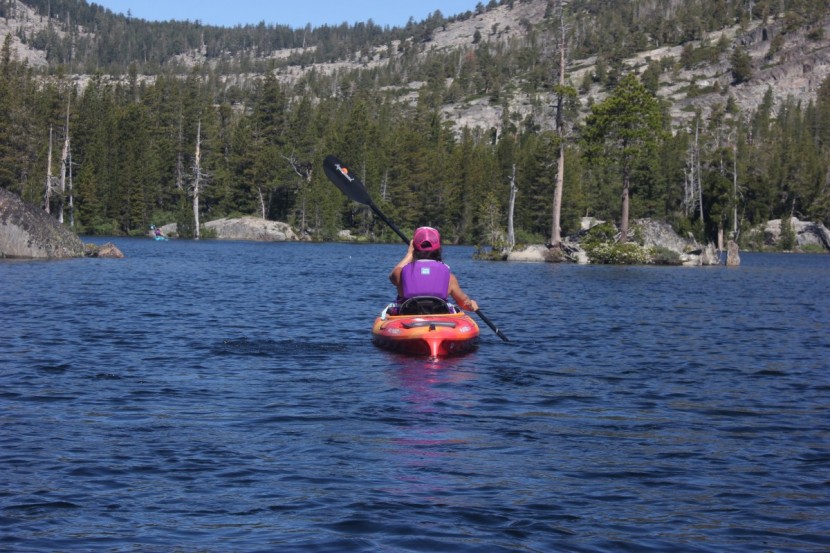Aqua-Bound Sting Ray Carbon Review

Our Verdict
Our Analysis and Test Results
The Aqua-Bound Sting Ray Carbon couples carbon-reinforced nylon blades with a full-carbon, ovalized shaft. The 230cm two-piece Posi-Lok ferrule paddle weighs 815 grams or 30.1 ounces.
Performance
Out of all the paddles we tested, the Sting Ray Carbon is one of the higher-performing models. The mid-sized blades are made of abX resin reinforced with carbon fibers, delivering a smooth and effective catch and transfer of power with each stroke.
The dihedral blade design helps water flow across the blade's surface, meaning that we felt no flutter from this paddle, even under considerable pressure. The carbon shaft has a textured feel, which makes the paddle easy to grip and helps to contribute to the effortless strokes that our test team experienced.
Some higher-end paddles are available that may outscore the Sting Ray in terms of performance, as they are constructed from lighter and more responsive carbon fiber. However, they are unlikely to be available for anything even close to this price range. Compared to lower-rated paddles, the superior performance of the Sting Ray was very noticeable for advanced paddlers and usually noticeable for beginners as well.
Ease of Adjustment
All of our testers agreed that the Posi-Lok ferrule on the Sting Ray Carbon is one of the most straightforward systems to use. Two small orange buttons are easily depressed, and with a simple twist of the paddle, it can be adjusted to the feather of your choice.
The Posi-Lok system was the quickest to dismantle in timed tests, a useful feature if you want to transport your paddle in two pieces. The clear markings on the paddle shaft make it easy to identify the different blade angles on offer, and testers could quickly adjust the settings under pressure.
Aqua-Bound claims to offer infinite blade feather angles on this paddle. In reality, it is limited to six, as you are confined by the interlocking grooves on the ferrule system. However, our testers found this range of options was sufficient to meet our different needs and paddling conditions.
Locking Mechanism Security
The Posi-Lok is also incredibly secure. In blind testing, many kayakers mistook this for a one-piece paddle, as there was no play in the shaft, regardless of which way we pulled on the paddle.
Some paddles had secure locking mechanisms when new, but these paddles later became challenging to adjust as they collected grit in the connection point of the shaft. The Aqua-Bound system was not prone to this same fate and maintained its integrity throughout all our adventures and beyond. Despite extensive use, the secure locking system never appeared to deteriorate, and we are confident that this system will hold up for a long time to come.
Weight
The Sting Ray Carbon is not much heavier than the lightest paddles in our review. During blind testing, few testers noticed a weight difference between the lightest paddles when on the water. This is a testament to the paddle's well-distributed weight, which gives it a balanced feel and helps kayakers develop a smooth and relaxed cadence with their paddle strokes.
This kayak paddle is lighter than most of the models we tested by a significant amount. For those weight-sensitive adventurers, this may be an important consideration, especially if you are looking to paddle for long distances. Significantly lighter paddles do exist. However, these are in a completely different price category, typically aimed at expert kayakers.
Quality of Construction
The Sting Ray Carbon is the only paddle we've tested that does not appear to have deteriorated in any way during the five years we have been testing it. The paddle's construction style and materials, as well as the company's history of making quality paddles, indicate that the Sting Ray paddle is likely to last many years of frequent use. You will be looking to update your car sooner than you will be considering replacing this paddle.
The Posi-Lok system appears to be designed with longevity in mind. It was incredibly easy to adjust and dismantle, even after extended use in sandy conditions. The finish of the materials on the Sting Ray made it smooth and easy to join the two pieces. It was not prone to collecting grit either, unlike some other models we tested.
The abX carbon-reinforced nylon blades are remarkably durable and stood up well in our gravel bank push tests. We would not expect these blades to wear down, even after extensive use in harsh environments.
The Sting Ray features integrated drip rings on the shaft. These drip rings are moveable and help prevent water from running down the shaft and onto your hands, ensuring a drier and more comfortable paddling experience.
Should You Buy the Aqua-Bound Sting Ray Carbon?
The Sting Ray Carbon was a top performer across all our testing metrics. Although it costs slightly more than your average paddle, all types of kayakers will be able to appreciate the higher performance that it delivers. When testers were on long kayak journeys, and especially when the conditions got tough, we were very grateful to have this paddle in our hands.
What Other Kayak Paddles Should You Consider?
If you want to extend your paddle's length by up to 15cm, consider the version of the Sting Ray Carbon with the versatile Versa-Lok ferrule. For a comparable paddle performance but at a lighter weight, check out the Werner Camano, or if you really want elite performance, the Werner Kalliste was the only other model we tested that gave the Sting Ray a run for its money. Speaking of money, if you want to save some of it, we recommend checking out the Werner Skagit FG, Bending Branches Whisper, or Carlisle Magic Plus.
| Awards | Best Overall Kayak Paddle |
|---|---|
| Price | $230 List Check Price at Amazon |
Overall Score  |
|
| Star Rating | |
| Bottom Line | This enjoyable and effective paddle is a top performer across all metrics with a very approachable price point for carbon components |
| Pros | Very sturdy and durable locking mechanism, smooth blade performance, easy to adjust, lightweight |
| Cons | A bit pricey, only comes in plain black |
| Rating Categories | Aqua-Bound Sting Ray... |
| Performance (30%) | |
| Ease of Adjustment (20%) | |
| Locking Mechanism Security (20%) | |
| Weight (20%) | |
| Quality of Construction (10%) | |
| Specifications | Aqua-Bound Sting Ray... |
| Measured Weight | 30.1 oz |
| Shaft Material | Carbon |
| Shaft Shape | Round |
| Blade Material | abX Carbon reinforced nylon |
| Blade Shape | Dihedral, asymmetrical |
| Adjustment Style | Posi-Lok ferrule system |
| Blade Offset Settings | 0, 15, 30, 45, 60 L and R |
| Length Options | 200 to 260cm in 5cm increments |
| Length Tested | 230cm |
| Style | Low-angle |


